Danny Robertshaw, 68, shares his story with Take 5:
Picking up the strange miniature dachshund which was standing in my house, I started to cry.
“I told you not to do this!” I said to my partner, Ron. “I don’t want another dog.”
Cradling the furry bundle, I thought of Chloe, my strawberry blonde Norfolk terrier who’d passed away just months earlier, after only a year as my companion.
She’d come into my life when I was at a real turning point.
In just six years, I’d lost both my parents and my older sister, Kitts.
Around this time, I’d also connected with Ron, 35, who competed at many of the same horse shows I did.
He’d also gone through some major changes after his marriage had ended.
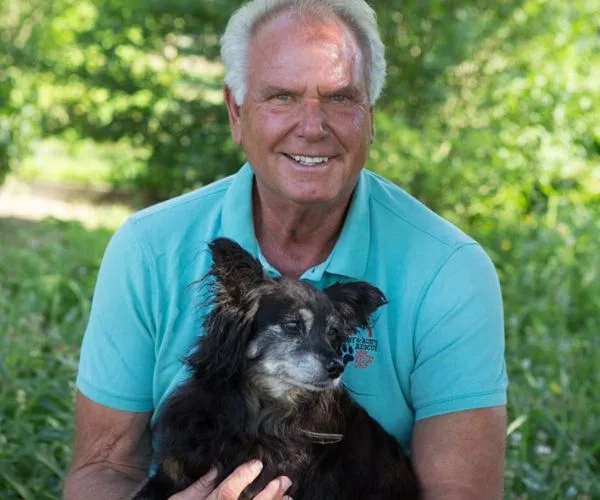
I met Ron at a horse show when he was 35. (Image: supplied)
As we got talking, it was clear we were attracted to each other and started dating.
Initially, I thought it was too soon for Ron to be in a relationship, as he’d just come out as gay and hadn’t been with a man.
But Ron was insistent – he even gave me Chloe and we later moved in together.
Just as life was looking up, Chloe was tragically hit by a car and died.
Losing her was as hard as grieving any family member.
Now there was a new dog in our lives, I felt uncertain.
Still, I told Ron I wanted to name him Ebenezer, after my late grandfather.
“That’s a great idea,” Ron said.
He explained how this miniature dachshund had been raised in a basement puppy mill.
Not surprisingly, Ebenezer was timid.
But as I looked into his worried brown eyes, I started to wonder: Had he been sent here by Chloe?
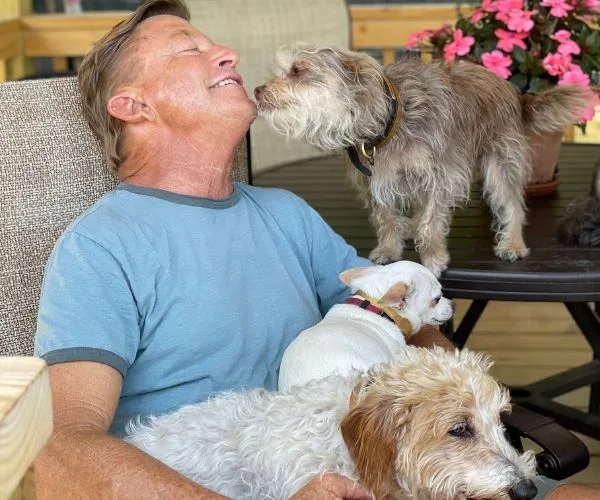
Ron knew how much I loved dogs. (image: supplied)
Soon, this dog had my heart and he clearly sensed it.
Over time, his sadness left and he’d take to sitting up like a gopher, staring patiently at Ron and I until we gave him our attention.
He loved us both, but it was me he’d cuddle up with in bed for the next 12 years until cancer sadly took him.
Living on a property, where we worked with horses, meant we could have many animals.
We welcomed chickens, rabbits, donkeys and, later, cows that would otherwise have been sent to the abattoir when they could no longer produce milk.
Giving them all a second chance was so rewarding.
But when Hurricane Katrina struck in August 2005, images of dogs swimming for their lives broke our hearts.
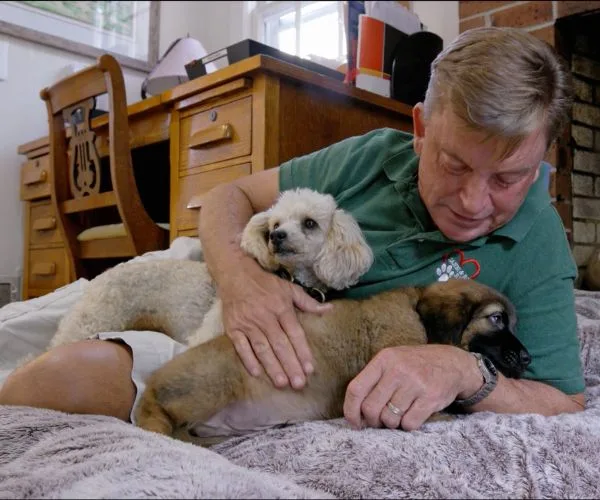
Our hearts went out to the dogs affected by Hurricane Katrina. (Image: supplied)
The hurricane caused such destruction, killing 1833 people, and many animal shelters couldn’t cope with the influx of injured and lost animals.
“We’ve got to do something,” Ron said to me as we watched it on TV.
“I’m all in,” I told him.
So we sent a trailer with supplies to local rescue centres.
Staff then asked if we could take in some dogs as they were inundated.
In the months to come, we received 20 deliveries.
Sometimes we had up to 50 in the makeshift pens we’d made, while we found them homes.
Almost every dog tested positive for heartworm disease, which we treated.

We soon took in 50 dogs from rescue centres. (Image: supplied)
One day, we received a crate with two dogs inside and taped to it was a note which read: Please keep Milly and Daisy together.
Turned out, they’d been floating on a dining table and, sadly, their elderly owner had drowned.
It didn’t take long before our rescue missions totally drained our savings.
In a short time, we’d rehomed almost 600 four-legged refugees from the storm but not all could be adopted.
Some stayed with us.
Knowing there were so many more dogs in need, Ron took out a second mortgage and we created a non-profit organisation, Danny & Ron’s Rescue, in 2008.
It meant we could hire staff and make some adjustments to our home.
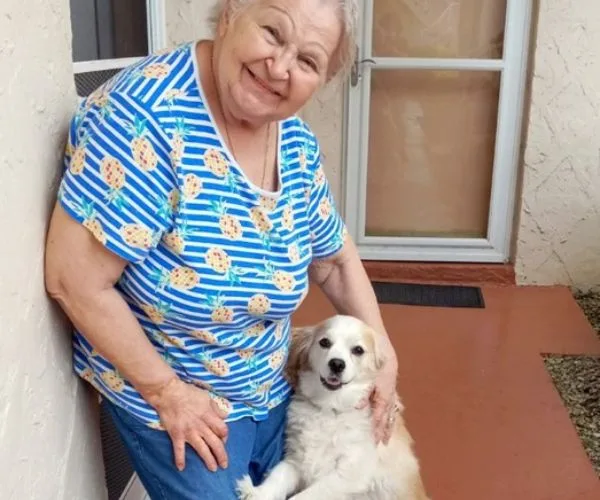
We needed help finding loving homes for all the dogs. (Image: supplied)
We turned the screened-in porch into a four-season room, where dogs with infectious illnesses were quarantined.
Our front bedroom was reserved for puppies, and the laundry – where we did up to 19 loads of washing a day – was a rehab facility.
But one highlight was what we called Blanket Hour.
We’d spread blankets on the kitchen floor and sit quietly, letting dogs approach if they felt like it.
Sometimes, it took just days, but for Cotton, a stray white poodle who had been dumped, it was months.
The poor guy was too scared to come when we called and went stiff if anyone held him.
“It makes me so sad and angry to think of the trauma these dogs have been through,” I said.
“How could humans act this way?” Ron replied.

Now we show others how to car for dogs. (Image: supplied)
During Blanket Hour, Cotton started out watching at the far end of the kitchen before slowly edging his way closer, and eventually, making it onto the blanket.
Then, he began following dogs into the bedroom at night and learned to trust certain people again.
Ron and I are married now and proud to say we’ve saved and adopted close to 14,000 dogs, including Cotton, who’s still with us.
Our work even caught the eye of filmmaker, Ron Davis, who approached us about making a documentary, Life in the Doghouse, which premiered on Netflix in 2019.
Now, we’ve published a book, Forever Home, which we hope shows others how to care for dogs and give them the love they deserve.
Ron and I aren’t getting any younger, but we hope to inspire others so that our work will live on.
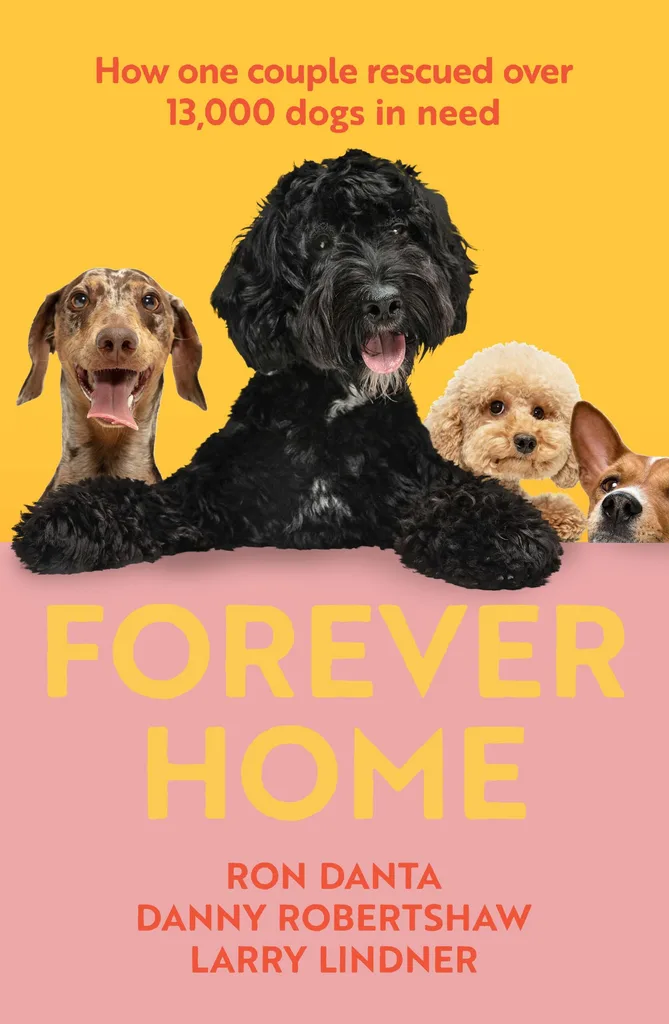
Forever Home is available from Affirm Press


